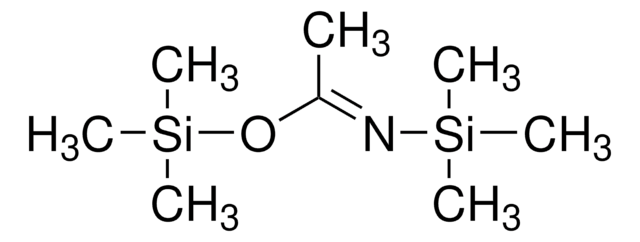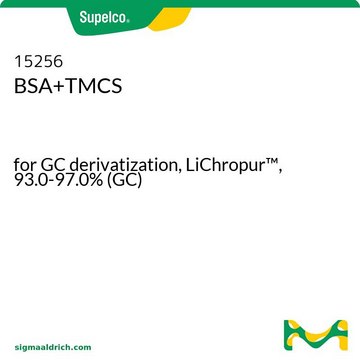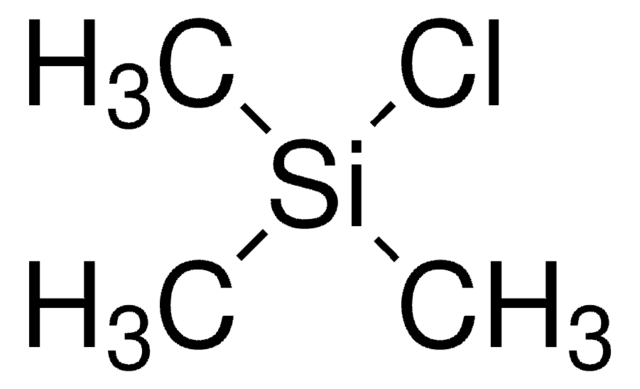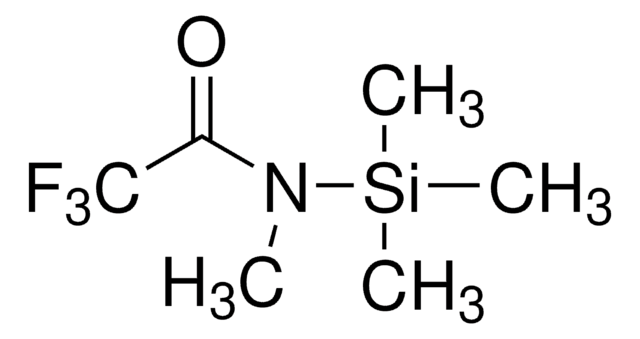15269
N,O-Bis(trimethylsilyl)acetamide
for GC derivatization, LiChropur™, ≥98.5% (GC)
Synonym(s):
BSA
About This Item
Recommended Products
grade
for GC derivatization
Quality Level
Assay
≥98.5% (GC)
form
liquid
quality
LiChropur™
reaction suitability
reagent type: derivatization reagent
reaction type: Silylations
technique(s)
gas chromatography (GC): suitable
refractive index
n20/D 1.417 (lit.)
n20/D 1.417
bp
71-73 °C/35 mmHg (lit.)
density
0.832 g/mL at 20 °C (lit.)
SMILES string
C\C(O[Si](C)(C)C)=N/[Si](C)(C)C
InChI
1S/C8H21NOSi2/c1-8(9-11(2,3)4)10-12(5,6)7/h1-7H3/b9-8+
InChI key
SIOVKLKJSOKLIF-CMDGGOBGSA-N
Looking for similar products? Visit Product Comparison Guide
General description
Application
Other Notes
Legal Information
related product
Signal Word
Danger
Hazard Statements
Precautionary Statements
Hazard Classifications
Acute Tox. 4 Oral - Flam. Liq. 3 - Skin Corr. 1B
Supplementary Hazards
Storage Class Code
3 - Flammable liquids
WGK
WGK 3
Flash Point(F)
111.2 °F - closed cup
Flash Point(C)
44 °C - closed cup
Personal Protective Equipment
Regulatory Listings
Regulatory Listings are mainly provided for chemical products. Only limited information can be provided here for non-chemical products. No entry means none of the components are listed. It is the user’s obligation to ensure the safe and legal use of the product.
FSL
Group 4: Flammable liquids
Type 2 petroleums
Hazardous rank III
Water insoluble liquid
JAN Code
15269-1ML:
15269-BULK:
15269-10X1ML:
15269-VAR:
15269-25ML:
15269-5ML:
Choose from one of the most recent versions:
Already Own This Product?
Find documentation for the products that you have recently purchased in the Document Library.
Our team of scientists has experience in all areas of research including Life Science, Material Science, Chemical Synthesis, Chromatography, Analytical and many others.
Contact Technical Service









